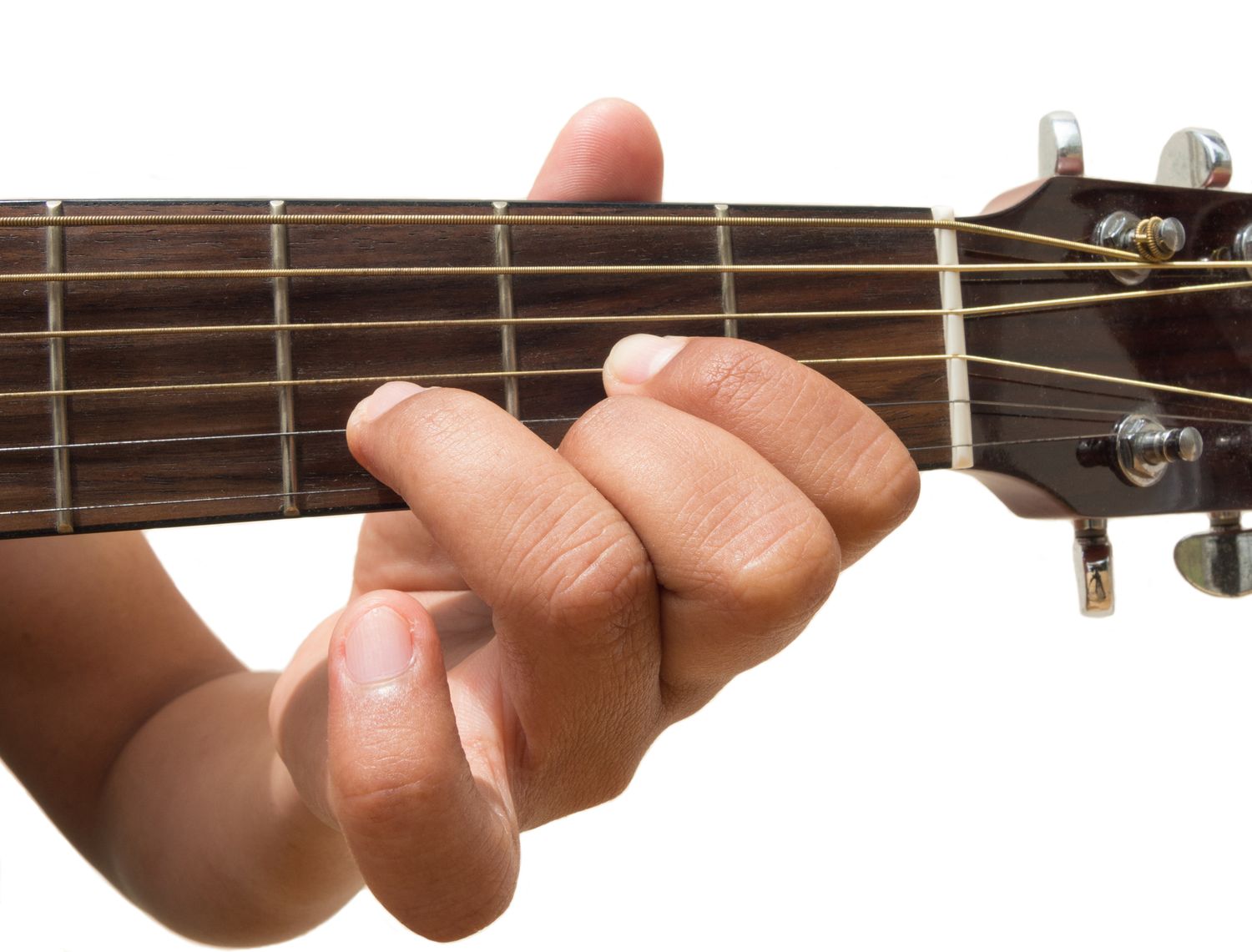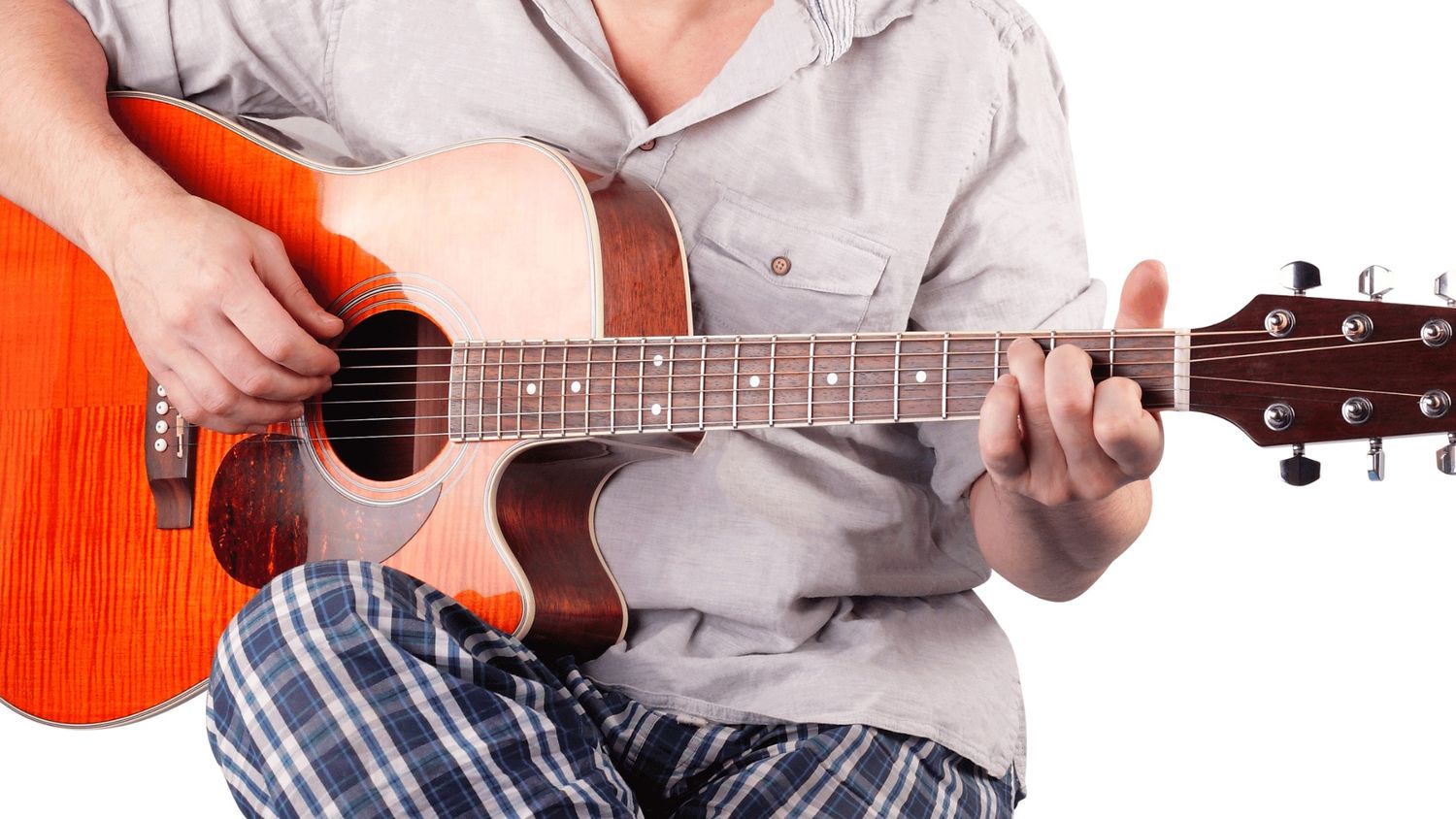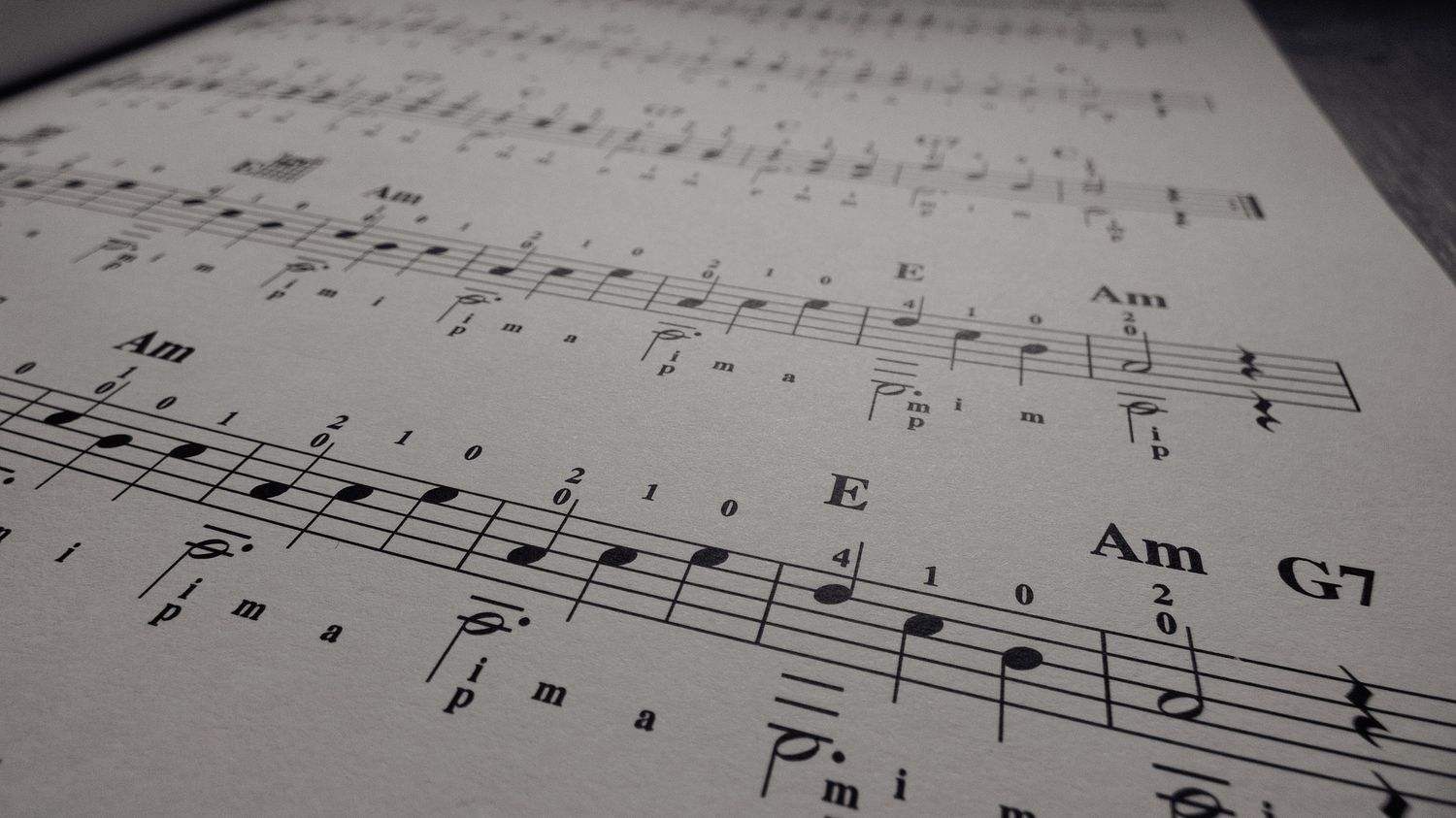Home>Instruments>Guitar>What Are Chords On A Guitar


Guitar
What Are Chords On A Guitar
Published: February 15, 2024
Learn about guitar chords, including how to play and understand them. Explore the basics of chord progressions and improve your guitar skills today.
(Many of the links in this article redirect to a specific reviewed product. Your purchase of these products through affiliate links helps to generate commission for AudioLover.com, at no extra cost. Learn more)
Table of Contents
Introduction
Playing the guitar is an incredibly rewarding experience, and understanding chords is a fundamental aspect of mastering this versatile instrument. Whether you’re a beginner eager to strum your first chord or an experienced guitarist looking to deepen your knowledge, delving into the world of guitar chords is an essential journey.
Chords are the building blocks of music, providing the harmonic framework that supports melodies and rhythms. On the guitar, chords are created by pressing down on the strings at specific frets and strumming across them to produce a harmonious blend of notes. Each chord has its own unique sound and emotional quality, allowing guitarists to convey a wide range of moods and atmospheres through their playing.
Understanding how chords are constructed and learning to play them fluently opens up a world of musical possibilities. Whether you aspire to accompany your favorite songs, write your own music, or jam with fellow musicians, a solid grasp of guitar chords is indispensable.
In this comprehensive guide, we’ll explore the essence of chords on a guitar, from their fundamental structure to the practical application of playing them. You’ll gain insights into basic chord shapes, learn how to form and transition between chords, and discover common chord progressions that underpin countless songs across various genres. By the end of this journey, you’ll have a deeper appreciation for the role of chords in guitar playing and be well-equipped to incorporate them into your musical repertoire.
Understanding Chords
At its core, a chord is a group of three or more notes played simultaneously, creating a rich, harmonious sound. In the context of guitar playing, chords are formed by pressing down on specific frets across multiple strings, effectively holding down certain notes to produce a unified sound when strummed. Each chord has a unique combination of notes, typically derived from a specific scale, resulting in its distinct tonality and character.
Chords are often categorized based on their quality, which is determined by the intervals between the notes comprising the chord. Common chord qualities include major, minor, augmented, and diminished, each evoking a different emotional quality. For instance, major chords tend to convey a bright, uplifting feel, while minor chords often evoke a sense of melancholy or introspection.
Understanding the structure of chords is essential for any guitarist. Chords are typically built from a root note, which serves as the foundational pitch, along with additional notes that determine the chord’s quality and flavor. These additional notes may include the third, fifth, seventh, and other extensions, all of which contribute to the chord’s overall sound.
Moreover, chords are often represented using chord diagrams, which visually depict the finger positions on the guitar fretboard required to play a specific chord. These diagrams are invaluable for beginners learning their first chords and serve as a quick reference for guitarists of all levels.
As you delve deeper into the world of chords, you’ll encounter chord progressions, which are sequences of chords played in succession. Understanding how chords relate to one another in a progression is crucial for songwriting, improvisation, and interpreting music. By mastering the art of chord progressions, you’ll be able to create captivating musical journeys that captivate and resonate with listeners.
Basic Chord Shapes
When first venturing into the realm of guitar playing, mastering basic chord shapes lays a solid foundation for your musical journey. These foundational shapes, often referred to as open chords, are typically among the first chords beginners learn due to their accessibility and versatility.
Open chords are played within the first few frets of the guitar and incorporate open strings, which add depth and richness to the chord’s sound. Some of the most common open chords include the C major, D major, G major, A major, E major, and E minor chords, each offering its own distinct tonal quality.
As you progress, you’ll also encounter barre chords, which involve using a single finger to press down multiple strings across the fretboard. Barre chords are movable shapes, meaning that the same finger positioning can be shifted up and down the neck to play different chords. While barre chords may initially present a challenge due to the finger strength and dexterity required, mastering them greatly expands your chord repertoire and allows you to play chords in any key.
Additionally, power chords are a staple in rock and punk music, known for their raw, aggressive sound. Power chords consist of just two different notes, the root and the fifth, and are played using the index finger and the ring finger or pinky finger. These versatile chords are movable and can be played across different frets, making them a popular choice for guitarists seeking a straightforward yet impactful sound.
Understanding and practicing these basic chord shapes is essential for honing your guitar skills. By familiarizing yourself with open chords, barre chords, and power chords, you’ll gain the versatility and confidence to navigate a wide array of musical styles and effectively express yourself through the language of chords.
Playing Chords on a Guitar
Mastering the art of playing chords on a guitar involves more than just pressing down on the strings. It encompasses a blend of technique, precision, and musicality that elevates your playing from mere strumming to expressive storytelling. As you embark on this journey, here are essential tips to enhance your chord-playing prowess:
- Finger Placement: When forming chords, pay close attention to the placement of your fingers. Each finger should press down on the appropriate string and fret, ensuring clear and distinct notes ring out when strummed. Proper finger placement is crucial for avoiding muted or buzzing strings and achieving a clean, resonant sound.
- Thumb Position: While playing chords, the placement of your thumb behind the neck of the guitar is pivotal. Your thumb provides support and stability, allowing your fingers to exert the necessary pressure on the fretboard. Experiment with different thumb positions to find a comfortable and effective grip.
- Strumming Technique: The way you strum across the strings significantly impacts the tone and dynamics of the chords. Whether you opt for a gentle, flowing strum or a percussive, rhythmic attack, refining your strumming technique adds depth and emotion to your chord progressions.
- Transitions Between Chords: Smoothly transitioning between chords is a hallmark of proficient guitar playing. Practice moving from one chord to another, focusing on the fluidity and accuracy of the transitions. Over time, these transitions will become seamless, allowing you to effortlessly weave chords into captivating melodies.
- Chord Voicings: Explore different voicings of the same chord to add variety and color to your playing. By experimenting with alternative fingerings and voicings, you can discover new sonic textures and expand your creative palette.
As you dedicate time to practicing and refining these aspects of chord playing, you’ll notice a marked improvement in your ability to convey emotion and nuance through your guitar. Each chord becomes a vessel for expression, resonating with the depth of your musical narrative and captivating listeners with its evocative allure.
Common Chord Progressions
Chord progressions form the backbone of countless songs across various musical genres, providing a compelling sequence of harmonies that underpin the melody and lyrics. Understanding common chord progressions equips you with the tools to interpret existing songs, compose your own music, and improvise with confidence.
One of the most ubiquitous chord progressions is the I-IV-V progression, which is prevalent in rock, blues, and pop music. In the key of G major, for instance, this progression would feature the G, C, and D chords. The I-IV-V progression offers a robust and familiar framework, lending itself to energetic and uplifting compositions.
Another widely used progression is the vi-IV-V-I, often found in ballads and pop songs. In the key of C major, this progression includes the Am, F, G, and C chords. The vi-IV-V-I progression exudes a sense of resolution and emotional depth, making it a popular choice for heartfelt and introspective compositions.
Furthermore, the I-V-vi-IV progression has left an indelible mark on contemporary music, gracing numerous chart-topping hits. This sequence, featuring the chords G, D, Em, and C in the key of G major, embodies a catchy and infectious quality, making it a staple in modern pop and rock anthems.
Understanding these and other common chord progressions empowers you to deconstruct songs, identify recurring patterns, and infuse your own compositions with time-tested harmonic foundations. As you explore diverse progressions and their emotional resonance, you’ll cultivate a deeper appreciation for the art of songwriting and gain insight into the universal language of music.
Conclusion
Congratulations on embarking on this enriching exploration of guitar chords. As you’ve discovered, chords are not merely static formations on the fretboard; they are vibrant, emotive entities that breathe life into music. By understanding the essence of chords, mastering basic chord shapes, and honing your chord-playing technique, you’ve taken significant strides toward unleashing the expressive potential of the guitar.
As you continue your musical journey, remember that chords are your allies in storytelling. They convey joy, sorrow, longing, and exuberance, serving as the canvas upon which melodies and lyrics unfold. Whether you’re strumming a familiar progression or crafting your own compositions, the language of chords empowers you to communicate with depth and resonance.
Furthermore, the knowledge of common chord progressions has equipped you with a valuable musical vocabulary. You now possess the insight to decipher the harmonic architecture of songs, appreciate the recurring motifs that shape musical narratives, and infuse your own creations with time-honored chord sequences.
Embrace the ongoing journey of exploration and practice, for it is through dedication and curiosity that your proficiency and creativity will flourish. Allow the guitar to be your companion in moments of introspection, celebration, and everything in between. With each chord you play, you contribute to the symphony of human expression, adding your unique voice to the ever-evolving tapestry of music.
May your chords resonate with passion and purpose, weaving tales that captivate hearts and inspire minds. As you continue to nurture your connection with the guitar, remember that the language of chords is a boundless landscape awaiting your exploration. So, strum on, embrace the harmonies, and let the music carry you to new horizons.











